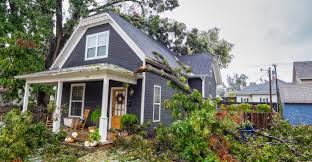How to Spot Structural Issues After Severe Weather
Severe weather events like hurricanes can cause significant damage to homes and buildings. High winds, heavy rain, and flying debris put immense pressure on structures, often leading to hidden damage that might not be immediately noticeable. Roof inspections are essential, but structural issues go beyond just the roof. Identifying potential risks early can prevent costly repairs and ensure the safety of occupants.
Inspect the Roof for Visible Damage
The roof is one of the most vulnerable parts of a structure during severe weather. Evaluating roof damage after a hurricane is crucial, as missing or displaced shingles, dents on metal panels, and cracked tiles indicate wind or impact damage.
Sometimes, water may seep through gaps, leading to mold growth and interior water damage. A thorough inspection should include checking for sagging areas, loose flashing, and clogged gutters, which can contribute to long-term structural problems.
Check for Foundation Cracks and Shifts
After a storm, inspecting the foundation is crucial. Heavy rainfall and flooding can cause soil erosion around the base of a home, leading to cracks in the foundation. Even minor fractures can expand over time, weakening the structure’s overall stability. If doors and windows suddenly become difficult to open, it may indicate that the foundation has shifted. Immediate attention to these issues can prevent further damage.
Look for Wall and Ceiling Damage
Interior and exterior walls can suffer from high winds and excessive moisture, leading to serious structural issues. Cracks, bulges, or discoloration on walls and ceilings are warning signs of structural compromise. Water stains may appear near corners, around windows, or along seams, suggesting a potential roof leak or internal water intrusion.
If any portion of a wall seems unstable, develops mold, or starts separating from adjacent structures, it is advisable to have a professional assess the damage before it worsens and leads to costly repairs.
READ MORE : International Tax Planning and Business Structuring
Evaluate Support Beams and Frames
Support beams and framing elements help maintain the structural integrity of a building. A severe storm can weaken these components, especially in older homes. If wooden beams show signs of warping, splitting, or excessive moisture absorption, they may no longer provide adequate support. Additionally, steel reinforcements should be inspected for rust or bending that could compromise their strength.
Evaluate Exterior Features and Attachments
Exterior elements such as porches, decks, and chimneys often experience stress during hurricanes, making them susceptible to long-term wear and tear. Loose railings, cracked brickwork, or detached fixtures indicate potential damage that may worsen if left unaddressed.
If these features shift, lean abnormally, or develop visible gaps, it could signal deeper structural concerns requiring immediate attention. Regularly securing, inspecting, and reinforcing these attachments can help prevent major repairs after extreme weather events, ensuring the overall stability and safety of the property for years to come.
Professional Inspection for Long-Term Safety
While homeowners can identify visible damage, a professional inspection ensures a thorough structural integrity evaluation. Roofing specialists, engineers, and contractors can assess hidden issues that may not be immediately obvious.
After evaluating roof damage after a hurricane, experts can recommend repairs or reinforcements to restore the home’s stability. Investing in professional assessments helps prevent minor issues from escalating into costly disasters.
Severe weather can leave lasting effects on a home’s structure, making early damage detection crucial for long-term safety. Homeowners can address issues before they worsen by thoroughly inspecting the roof, foundation, walls, support beams, and exterior features. While some damage is easy to spot, hidden structural weaknesses require professional evaluation to ensure the home remains secure. Taking proactive steps after a hurricane prevents costly repairs and strengthens the building’s resilience against future storms.

